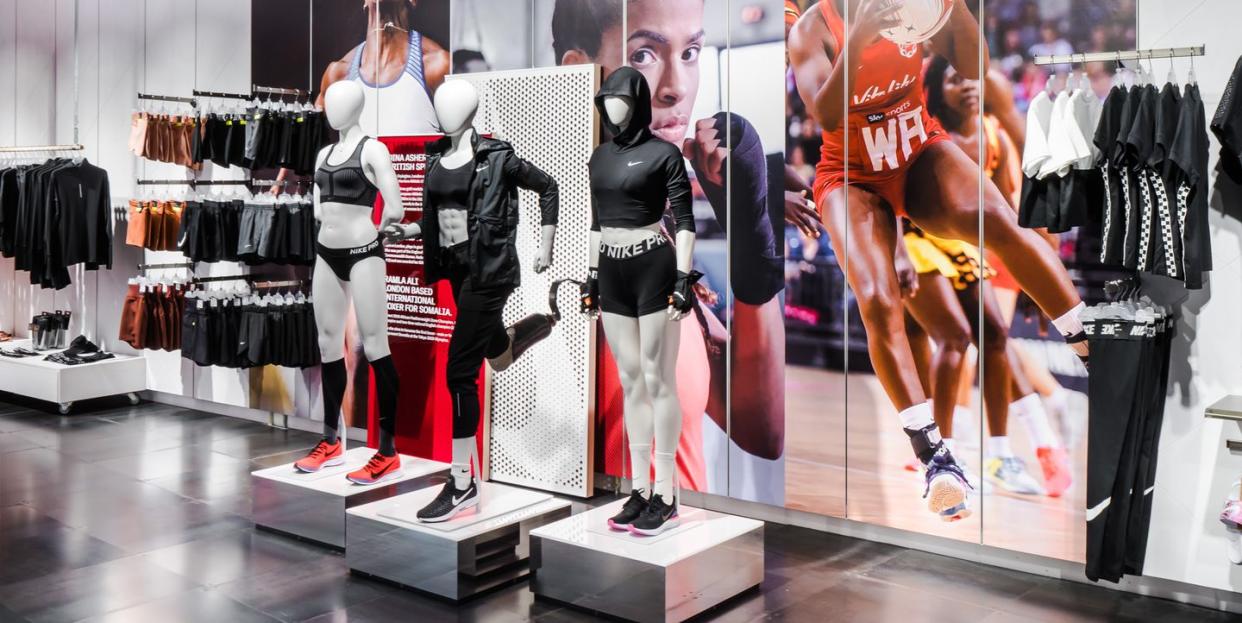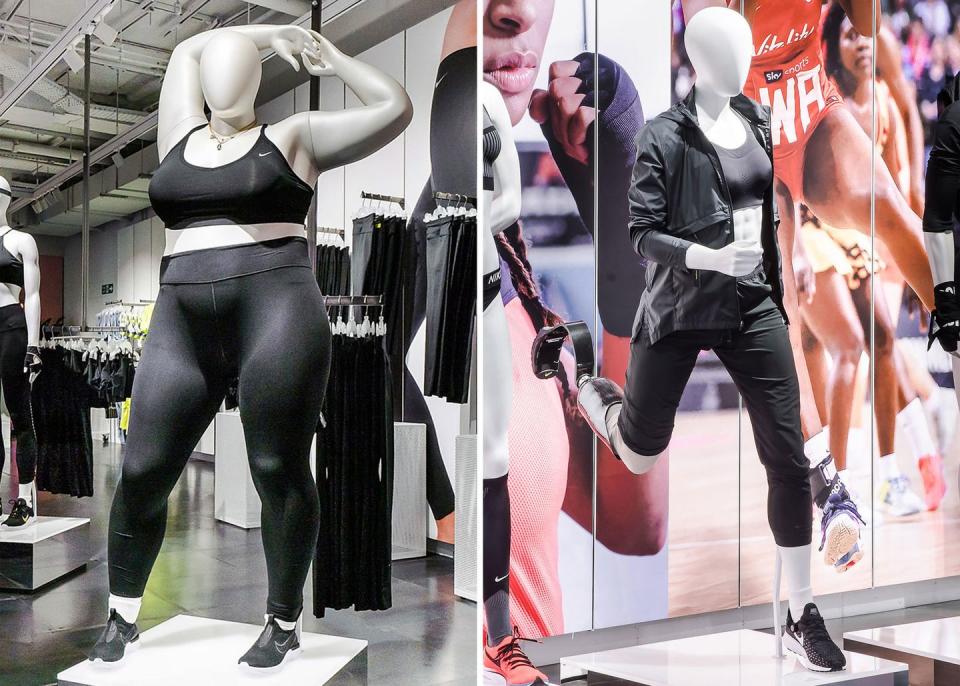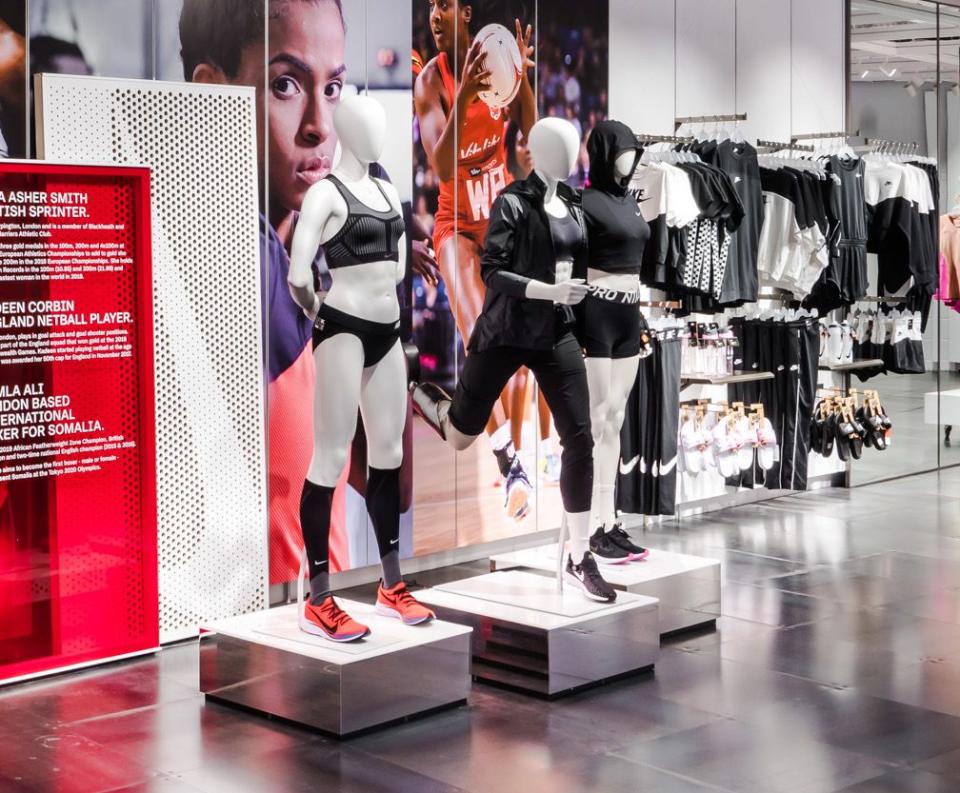Why Nike's Parasport Mannequin Deserves Just As Much Discussion As The Plus-Size One

You might consider mannequins to be a trivial part of your average shopping trip. On inspection they are empty, anonymous shells – their faceless and Barbie doll-esque proportions ready to be disembodied with the arrival of each new collection.
But mannequins are the first thing you see as you approach a store; they hold a symbolic power welcoming us across the door’s threshold. For brands, mannequins are not just decorative, they are a 3D representation of their target consumer. Surely it’s problematic to assume that all customers befit the archetype of a tall, slim and often pale-skinned mannequin? Ignoring the existence of diverse body sizes and abilities is far from inclusive.

So when Nike unveiled new plus-size and parasport mannequins in its flagship London store last week, the brand’s step towards inclusivity was met with great fanfare. However, things rapidly turned sour when a vocal opponent of the new plus-size mannequin argued the ‘gargantuan’ figure was glorifying obesity. Writing for The Telegraph, Tanya Gold perpetuated dangerous myths about body image: ‘She is not readying herself for a run in her shiny Nike gear. She cannot run. She is, more likely, pre-diabetic and on her way to a hip replacement.’
The writer was swiftly ‘cancelled’ by body-positive activists, fellow writers and the Twittersphere, who saw her views as sizeist and fatphobic. But, in all the furore of mannequin-gate, we’ve overlooked the significance of the first disabled or parasport mannequin on a retail floor. As a lower-leg amputee, the mannequin is styled in black Nike leggings that are customised to accommodate a running blade. Sportswear brands almost exclusively feature able-bodied models, so the fact that Nike has made disabled bodies visible in this way is a huge breakthrough.
‘It’s good to see big brands beginning to reflect a greater variety of shapes and sizes,’ agrees Paralympic champion Tanni Grey-Thompson. ‘The plus-size mannequin has stolen the headlines, but the parasport mannequin represents a step in the right direction for the positive portrayal of disability sport and physical activity for all.’
A post shared by iRoam Tours (@iroamtours) on May 10, 2019 at 6:53am PDT
The parasport mannequin normalises disability, and shows that it shouldn’t be erased or hidden from public view. To me, this signals a new chapter for inclusion. It feels like there’s a renewed momentum as brands are quickly realising that it’s no longer enough to be talking about ‘diversity’, they need to start taking action and making visible changes to the way they represent consumers.
Disabled shoppers are too often ignored by retailers. Known as the ‘purple pound’, the UK’s 13.9 million disabled people have a collective estimated spending power of £249bn – and rising. They represent the largest untapped consumer group, but less than 10% of businesses have a targeted plan to access the disability market. This includes initiatives such as improving poor accessibility in stores, designing adaptive clothing or casting disabled models in fashion campaigns.
As someone with a disability, I’ve experienced first-hand poor access on the high street. From overcrowded shop floors to no step-free access, I now almost exclusively shop online to avoid a litany of accessibility issues. But retailers must recognise that being fashion conscious and having a disability are not mutually exclusive.
Although the Paralympics have had a positive impact on how the public perceives people with disabilities, many brands are still not catering to them. It’s clear that Nike is intent on changing this: ‘The consumer wants to see a diverse and inclusive range of product to serve sporting needs. In Nike retail stores, customers can use our services, like legging alteration to get products adjusted to their needs.’ In 2015, Nike also launched an easy-entry footwear system called FlyEase – which replaced their traditional lacing system with a zip at the back of the shoe – so athletes of all abilities can perform better.

In fact, adaptive clothing that is designed to meet the needs of those with disabilities and chronic conditions is set to become a $288.7bn (£228.7bn) industry. There is still a long way to go before fashion adequately reflects the world we see around us, but introducing a range of stylish clothing for disabled individuals will play an important role in achieving this.
As a global brand, Nike has set a new precedent for inclusion, and it clearly won’t be long before others follow suit. Meanwhile, let’s not ignore the parasport mannequin and this latest milestone for disability equality, because it’s truly something worth celebrating.
('You Might Also Like',)

